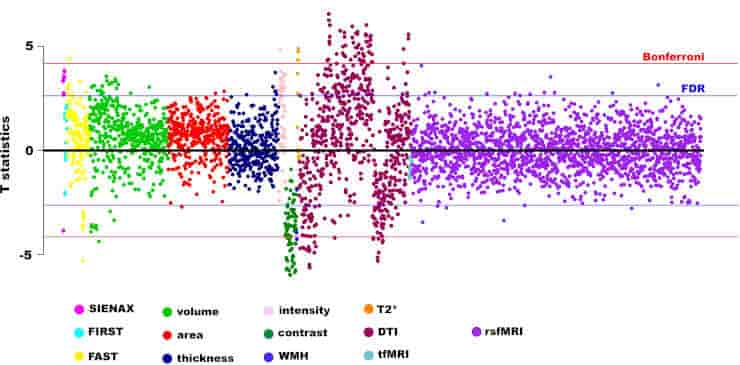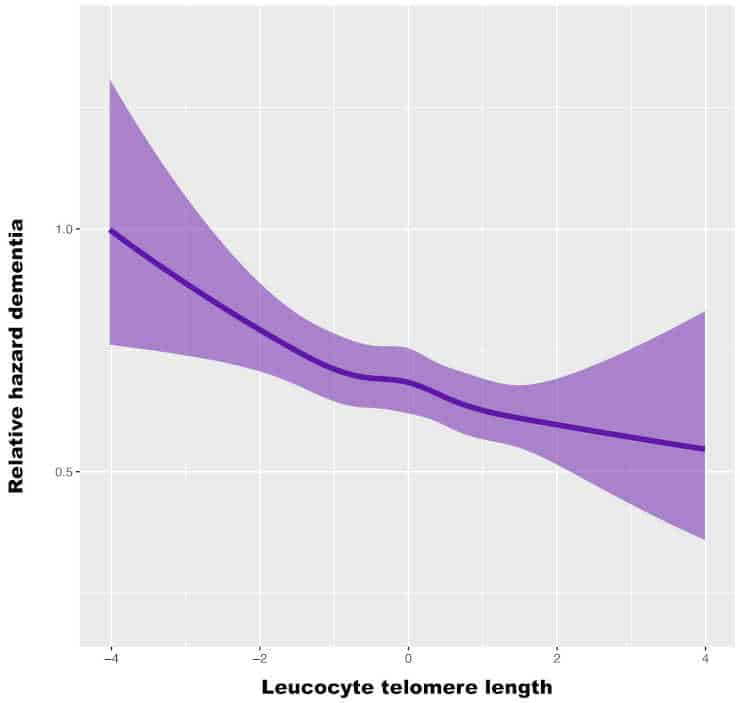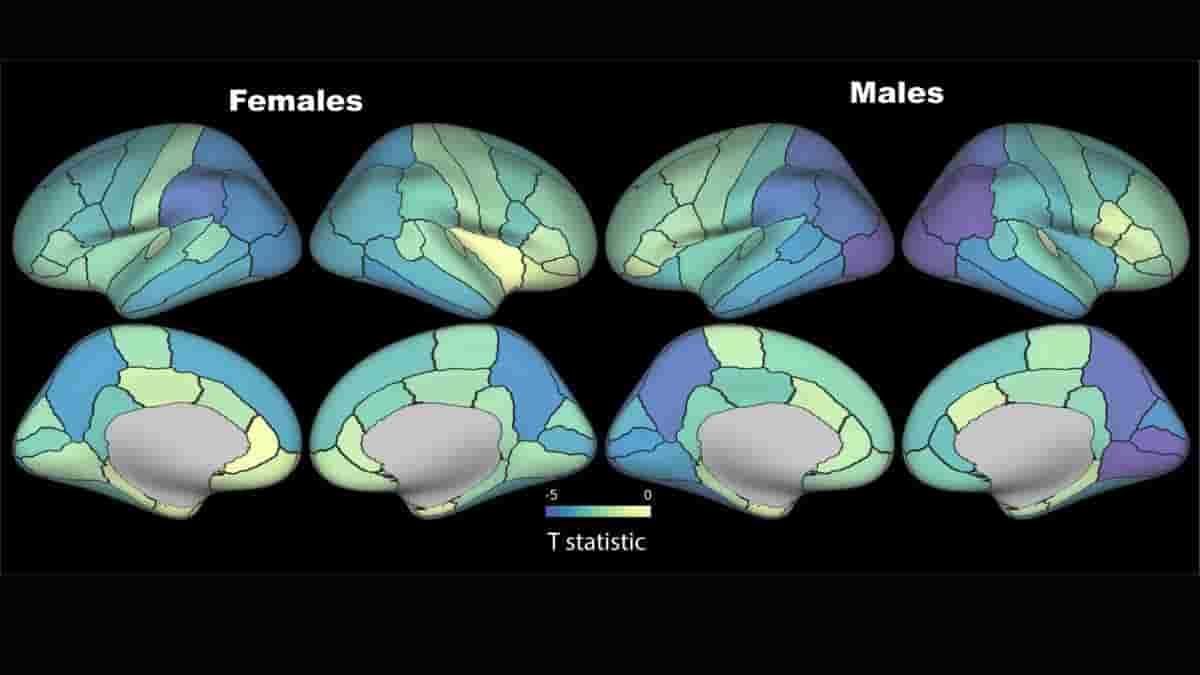Changes in the brain caused by Alzheimer’s disease are associated with shortening of the telomeres — the protective caps on the ends of chromosomes that shorten as cells age — according to a new study.
Telomeres on chromosomes protect DNA from degradation, but they lose some length each time a cell divides. Short telomeres are a sign of stress and cellular aging, and are also associated with a higher risk of neurological and psychiatric disorders.
The relationship between telomere length and the alterations in the brains of people with neurological conditions is still poorly understood. Understanding those relationships could offer insights into the biological mechanisms that cause neurodegenerative disorders.
Thicker Cerebral Cortex
Researchers compared telomere length in white blood cells to brain MRI results and electronic health records from more than 31,000 participants in the UK Biobank, a large-scale biomedical database and research resource containing anonymized genetic, lifestyle, and health information from half a million UK participants.

Credit: PLoS ONE 18(3): e0282363 CC-BY
The analysis revealed that patients with longer telomeres also tended to have better brain health. They had more grey matter in their brains overall and a larger hippocampus, both of which shrink in Alzheimer’s patients.
Longer telomeres were also associated with a thicker cerebral cortex — the outer, folded layer of grey matter — which thins as Alzheimer’s disease progresses. The researchers speculate that longer telomeres might therefore help protect patients from developing dementia, though there was no association with stroke or Parkinson’s disease.
Accelerated Brain Aging
The results demonstrate that a number of changes in the brain connected to dementia can be correlated with shorter telomeres. To date, this is the largest and richest study of the relationships between telomere length and MRI markers in the brain.

The associations suggest that accelerated aging in the brain, as indicated by telomere length, could represent a biological pathway that leads to neurodegenerative disease.
The authors found associations between telomere length, a marker of biological ageing, and multiple aspects of brain structure. This may help to explain why people with longer telomeres are less likely to develop dementia.
Abstract:
Telomeres form protective caps at the ends of chromosomes, and their attrition is a marker of biological aging. Short telomeres are associated with an increased risk of neurological and psychiatric disorders, including dementia. The mechanism underlying this risk is unclear, and may involve brain structure and function. However, the relationship between telomere length and neuroimaging markers is poorly characterized. Here we show that leucocyte telomere length (LTL) is associated with multi-modal MRI phenotypes in 31,661 UK Biobank participants. Longer LTL is associated with: i) larger global and subcortical grey matter volumes including the hippocampus, ii) lower T1-weighted grey-white tissue contrast in sensory cortices, iii) white-matter microstructure measures in corpus callosum and association fibres, iv) lower volume of white matter hyperintensities, and v) lower basal ganglia iron. Longer LTL was protective against certain related clinical manifestations, namely all-cause dementia (HR 0.93, 95% CI: 0.91–0.96), but not stroke or Parkinson’s disease. LTL is associated with multiple MRI endophenotypes of neurodegenerative disease, suggesting a pathway by which longer LTL may confer protective against dementia.
Reference:
- Topiwala A, Nichols TE, Williams LZJ, Robinson EC, Alfaro-Almagro F, Taschler B, et al. (2023) Telomere length and brain imaging phenotypes in UK Biobank. PLoS ONE 18(3): e0282363.
Last Updated on November 11, 2023
